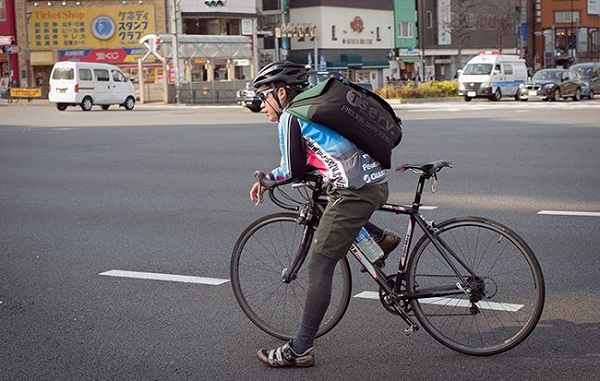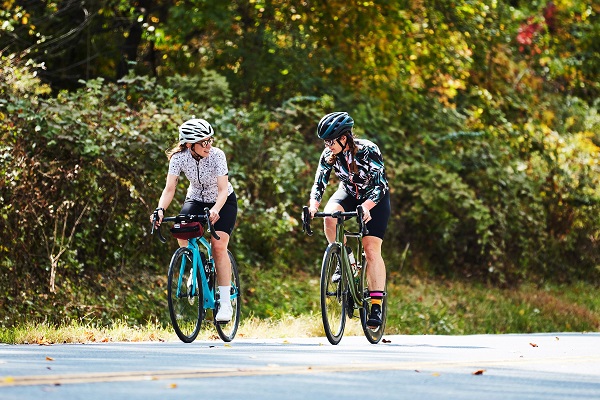
Every day more cyclists are added to mobility in cities, and it would be great to be able to ride a bike all day without having to worry about dying trying or, at best, without being intimidated by some angry motorist who puts our Safety at risk, however, it is a reality that in most of the trips we make we have to put our full attention on the cars if we want to get home safely.
The truth is that as urban cyclists, we not only depend on motorists to pedal calmly through the city, there is a lot that bike users can do – in addition to following the rules and not driving like crazy – to stay safe during our transfers by bicycle and enjoy the many benefits that this practice of active mobility has for our health, economy and city. Keep reading: Womens bikes size guide
Safety guidelines

Before you start, you should be clear that there are concepts such as driving skills, using common sense, respecting traffic regulations, and knowing at least how to repair a puncture, which is essential for your rides to be safe and pleasant. Keep reading https://kbsm.org/how-to-deep-clean-a-road-bike/
1. One eye to the cat and another to the squiggle (keep an eye on traffic at all times)
It is estimated that at least 70% of collisions involving bicyclists and motorists occur at intersections and crosswalks, but within this percentage, there is a large number of cases that happen due to the carelessness of both parties. So keeping an eye on the road is already half the safety.
Before entering an intersection or driving through an intersection, check-in both directions of the street that they are safe to travel. For example, when driving in the right lane, do not stop checking -constantly- that that desperate motorist who passed you meters before will not block your way because he wants to turn -from the second lane- right on the street you are going to cross.
While pedaling and without losing the straight line, do not forget to regularly look over your shoulder – behind – to prevent that some car does not keep a safe distance concerning you or that some clueless driver puts you in imminent danger.
Claim the best position on the road: good positioning is about pedaling in the best place where you can see and, above all, be seen. When driving where there is no bicycle infrastructure, circulate in the center of the low-speed lane and, personally, I recommend that you drive closer to the left of the lane than to the center, but never to its extreme right.
By driving this way in the lane, you will give yourself enough space to avoid collisions with cars turning to the right, in addition to making your presence more visible to motorists.
2. Stay away from car doors
The only way to avoid a door slam is to anticipate that action and be aware that in many cases, motorists are indifferent to others and will open the door just as you pass them.
Keep your distance from the doors of parked cars, and in areas of vehicular influx where they stop in double file, always stay away as much as possible from those parked cars since the car driver will open the door at any time.
3. Beware of the fish (all public transport is a potential danger)
I mean, it’s not to be judgmental, but public transport operators, regardless of the type of unit (minibus, bus, taxi, or others), have struggled to earn a reputation for being savage behind the wheel.
Get away as soon as possible, never pass them on the right because at any moment they will stop to go up or down a passage, blocking your way and, if you let them, they will corner you towards the sidewalk reducing your space to maneuver.
Remember that buses and cars have blind spots: high-risk areas for a cyclist to pedal or stay close to the vehicle. Since the driver’s vision is null, any carelessness can culminate in the cyclist’s death by a run over. Stay away from them.
4. Exaggerate your body language and make eye contact
If you don’t want to call it that, don’t do it, but when you ride a bike through the streets of the city, think that you are executing a choreography: a dance where you and your bike are one, and the street with motorists is your clumsy partner. You must mark each of your movements in advance so that it does not step on you.
For example, plan your lane or direction changes pointing not only with your hand, but with your whole body – lean slightly, make yourself noticed – look at your partner – street and cars – up and down, if possible make eye contact either through your rearview mirror or directly with the driver of the car near you, and launch yourself in the direction you have decided, but always making sure that motorists have seen you.
Very well, you already have a notion of how to avoid some dangers on the roads, and now it is your turn to take care of those who are more vulnerable than you. Yes, there are, and they are pedestrians, yield to them at all times no matter how distracted and infuriating they may seem.
5. Pass behind pedestrians, not in front of them
That’s right, it has happened to me, and surely to you too: the pedestrian has already jumped almost on top of you and you can’t slow down, much less stop. Well, all is not lost. Apply the simple maneuver of going behind them and not in front of them because an instinct of the pedestrian will be to jump forward, trying to avoid being rammed away from problems instead of stopping and going backward.
By passing on your bike through the space behind the pedestrians, you will not leave room for any doubt, and thus you will avoid a greater problem and help the pedestrian free it. So everyone will be happy to continue on their way.
6. Cycle lanes, sidewalks, confined public transport lanes, how to circulate on them?
Many people, not just bike share users, assume that sidewalks are safe for biking because they put a certain distance between them and cars. Unfortunately, sidewalks are not a good place to ride a bike, and it is illegal in some cities. Try to avoid them at all costs unless you have a choice, then dismount and walk your bike to the side.
In bike lanes, bicycles are supposed to have the right of way, but in many cases, the sidewalk is so narrow or invaded by street vendors that pedestrians find it necessary to walk on them, so be patient and, above all tolerant, avoid incidents with pedestrians, try to warn them of your presence – without yelling or being aggressive – and give way.
7. Riding a bike around large vehicles (trucks and buses)
From your bike, you can see over most cars, but do not let this ease of vision give you a false sense of security because motorists and especially public transport operators will not see you as easily as you see them.
First of all, never assume that the bus operator is watching you. The most likely thing is that he is distracted collecting the ticket, trying to beat the passengers to the back bus or, simply thinking about something other than whether there is a cyclist near him.
Never pass or pass the truck on the right. The buses usually circulate close to the sidewalk to collect passage. So in areas where you see or know that people are waiting for the bus, it is best to drive in the next lane next to it.
Also, remember that the minibuses usually circulate on two lanes simultaneously, so always expect it to close at any time, whether or not there is the passage to pick up, the operators are unpredictable, be smarter and do not become a victim.
If you have to ride sideways to the bus, try to pedal within the angle of vision of the rear-view mirror (if you can see the driver’s face in the mirror, this is the correct angle).
Before changing lanes, always look behind and if you are in front of the truck, I recommend that you go at least 3.5 meters ahead. If you cannot put that distance between you, make yourself visible:
- Raise your hand constantly so that you can see and never but never.
- Let the truck corner you to the right of the lane.
- Always circulate in the center of the lane.
Once you are clear about the aspects above, ensuring security in your rides will be easier than you think. Hey, before we finish, don’t forget that you should never let your guard down even on confined roads (bike lanes), stay alert and enjoy your city by bike.
